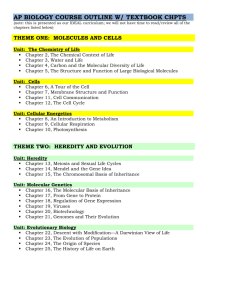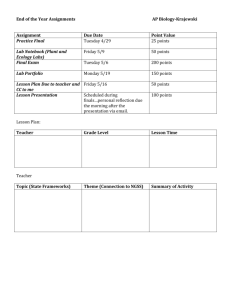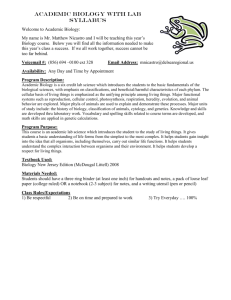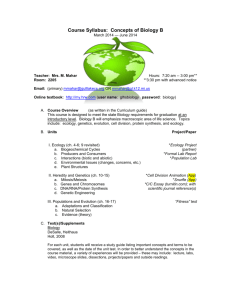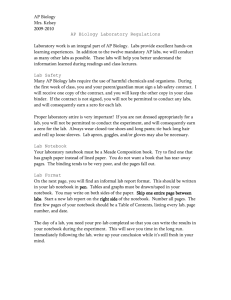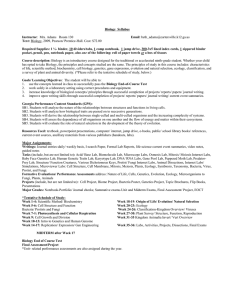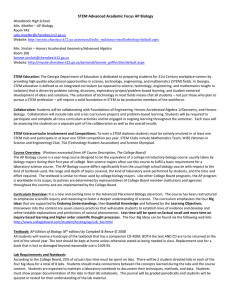Mr. Mark Niebojeski Teacher of Biology, AP Biology, AP
advertisement
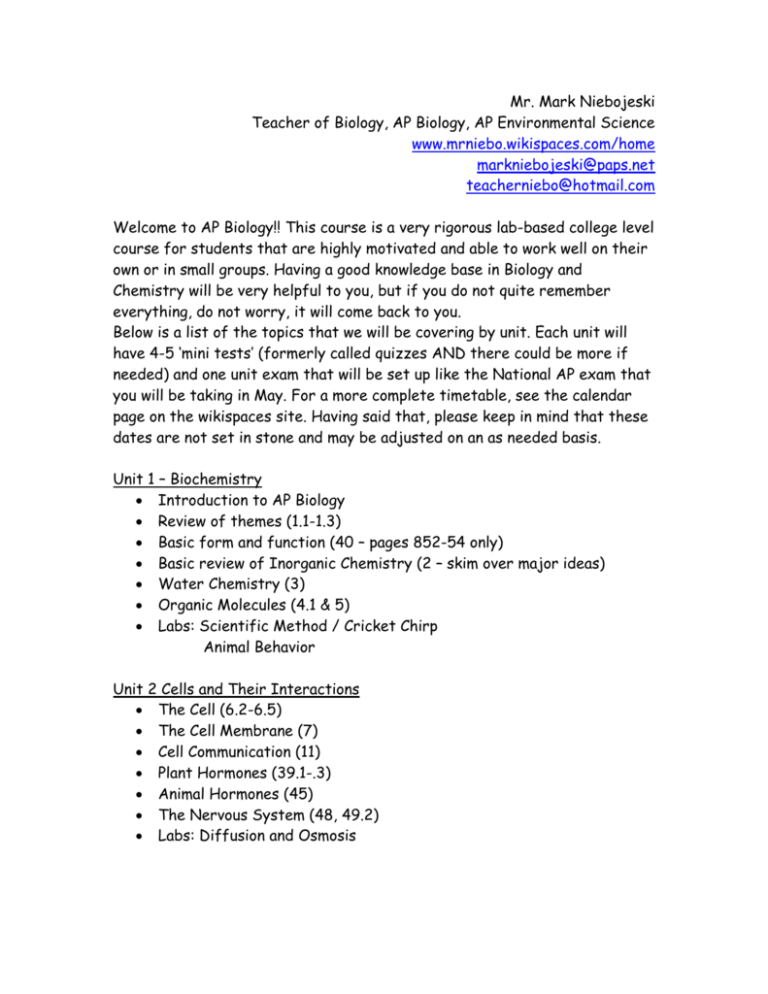
Mr. Mark Niebojeski Teacher of Biology, AP Biology, AP Environmental Science www.mrniebo.wikispaces.com/home markniebojeski@paps.net teacherniebo@hotmail.com Welcome to AP Biology!! This course is a very rigorous lab-based college level course for students that are highly motivated and able to work well on their own or in small groups. Having a good knowledge base in Biology and Chemistry will be very helpful to you, but if you do not quite remember everything, do not worry, it will come back to you. Below is a list of the topics that we will be covering by unit. Each unit will have 4-5 ‘mini tests’ (formerly called quizzes AND there could be more if needed) and one unit exam that will be set up like the National AP exam that you will be taking in May. For a more complete timetable, see the calendar page on the wikispaces site. Having said that, please keep in mind that these dates are not set in stone and may be adjusted on an as needed basis. Unit 1 – Biochemistry Introduction to AP Biology Review of themes (1.1-1.3) Basic form and function (40 – pages 852-54 only) Basic review of Inorganic Chemistry (2 – skim over major ideas) Water Chemistry (3) Organic Molecules (4.1 & 5) Labs: Scientific Method / Cricket Chirp Animal Behavior Unit 2 Cells and Their Interactions The Cell (6.2-6.5) The Cell Membrane (7) Cell Communication (11) Plant Hormones (39.1-.3) Animal Hormones (45) The Nervous System (48, 49.2) Labs: Diffusion and Osmosis Unit 3: Cellular Energy Metabolism (8) Respiration (9) Homeostasis (40.2-.4) Photosynthesis (10) Labs: Enzymes Respiration Photosynthesis Unit 4: Classic Genetics The Cell Cycle (12) Meiosis (13) Mendel (14) Chromosomal Basis of Inheritance (15) Labs: Mitosis and Meiosis Chi-Square Unit 5: Molecular Genetics / Eukaryotes Molecular Basis of Inheritance (16) Form Gene to Protein (17) Regulation of Gene Expression (18.2-.5) Animal Development (47.3) Genomes and Their Evolution (21.2, 21.5) Lab: Molecular Modeling Unit 6: Molecular Genetics / Prokaryotes Bacteria (27 – pages 559-564) Regulation of Gene Expression (18.1) Viruses (19.1-.2) Biotechnology (20.2) Immune System (43) Lab: Transformation Unit 7: Evolution Darwin (22.2-.3) Populations (23) Species (24.1-.4) Origin of Life (25.1-.5) Phylogeny (26.1, 26.3, 26.6) Labs: Hardy-Weinberg BLAST Unit 8: Ecology Behavior (51) Introduction to Ecology (52.2) Population Ecology (53) Community Ecology (54) Ecosystems (55) Conservation Biology (56.1, 56.4) Labs: Water Quality Transpiration As for what you need for the class…. 1. You will need a SEPARATE notebook for this course. I would recommend a 3-ring binder so that you can add handouts to your notes as you get them. This will also allow you to have a separate section for vocabulary, one for class notes, and one for other papers and handouts. I have been teaching for a while now, and the students who usually do the best in the class follow this format – it is easy to set up, follow, and find information when you need it. Also, you can remove papers from sections we are completed with to keep for the later review for exams. 2. You will need a SEPARATE lab report notebook. This must be a notebook with sewn in pages, like the marble composition book. Try to find one with 100 + pages as it will be your lab notebook for the year. (More lab information to follow on a separate paper) 3. BE ON TIME!!! – there is quite a lot of information to cover before the national exam in May. At times we will have to move fast, so you need to be in class to keep up. 4. Grading – Like a college course, exams will make up the majority of your grade – 60%. Lab reports and projects will account for 30% of your overall grade. The remaining 10% will be from quizzes that will be given…often…to make sure you are keeping up with the reading and vocabulary assignments.


